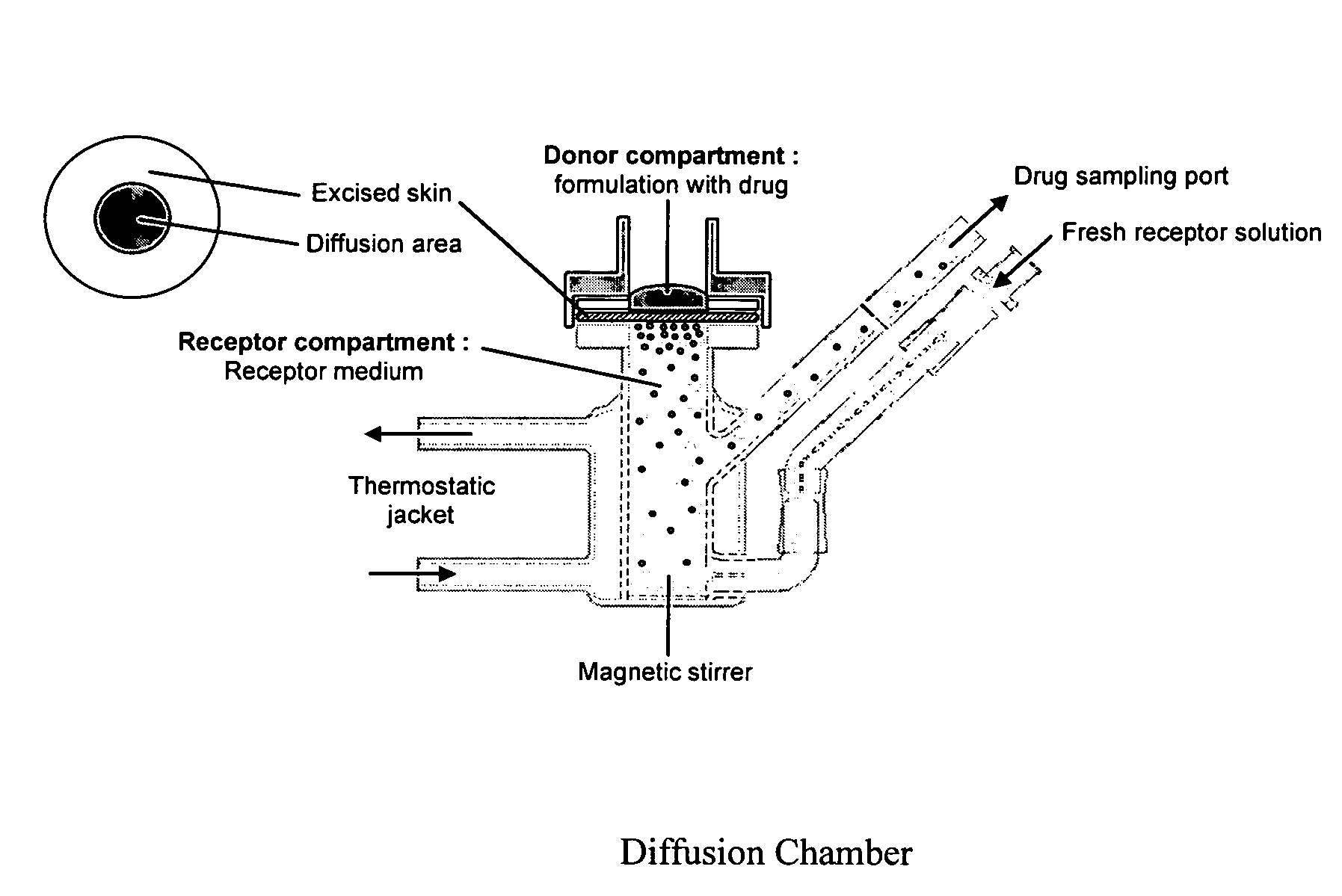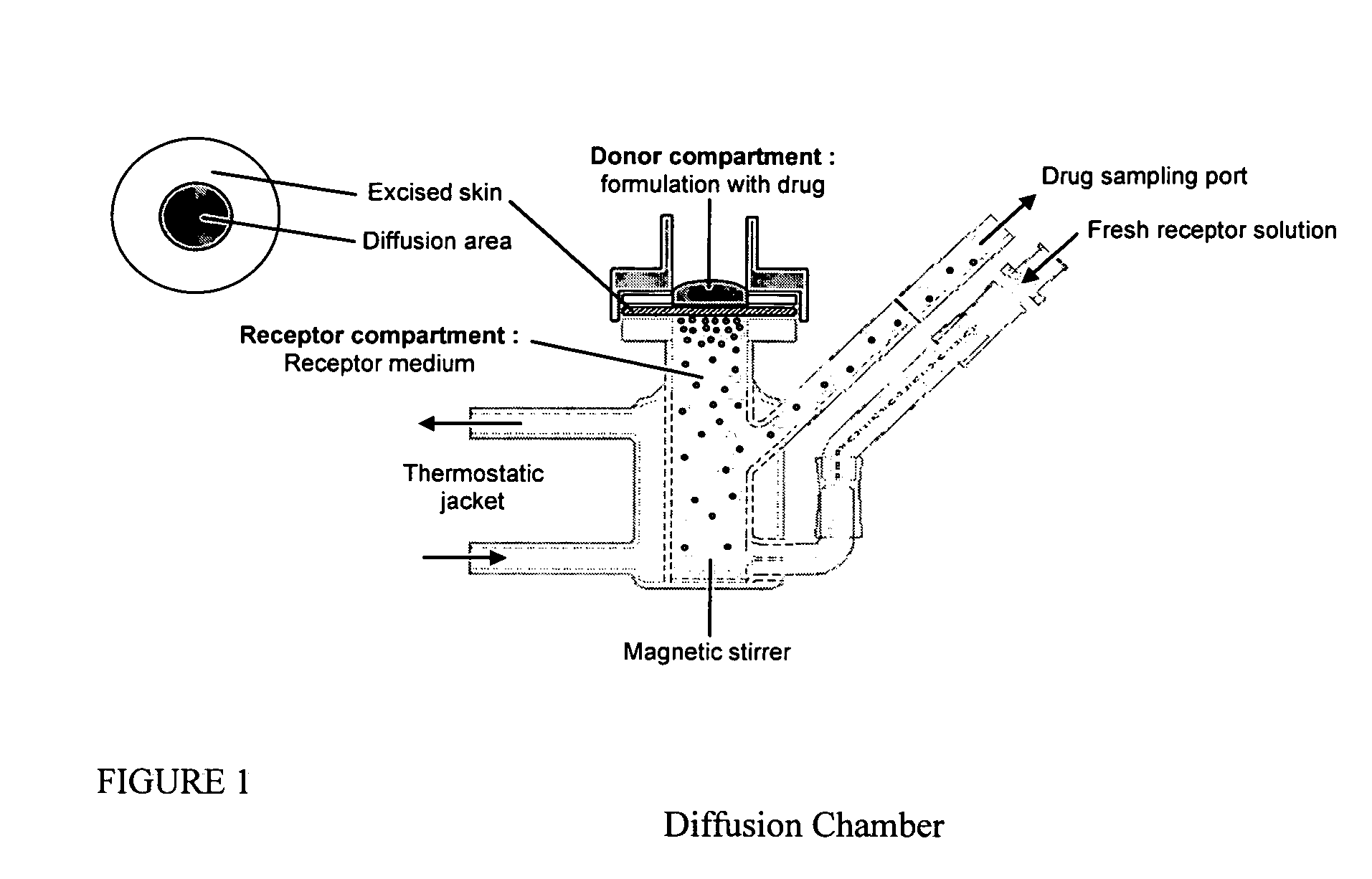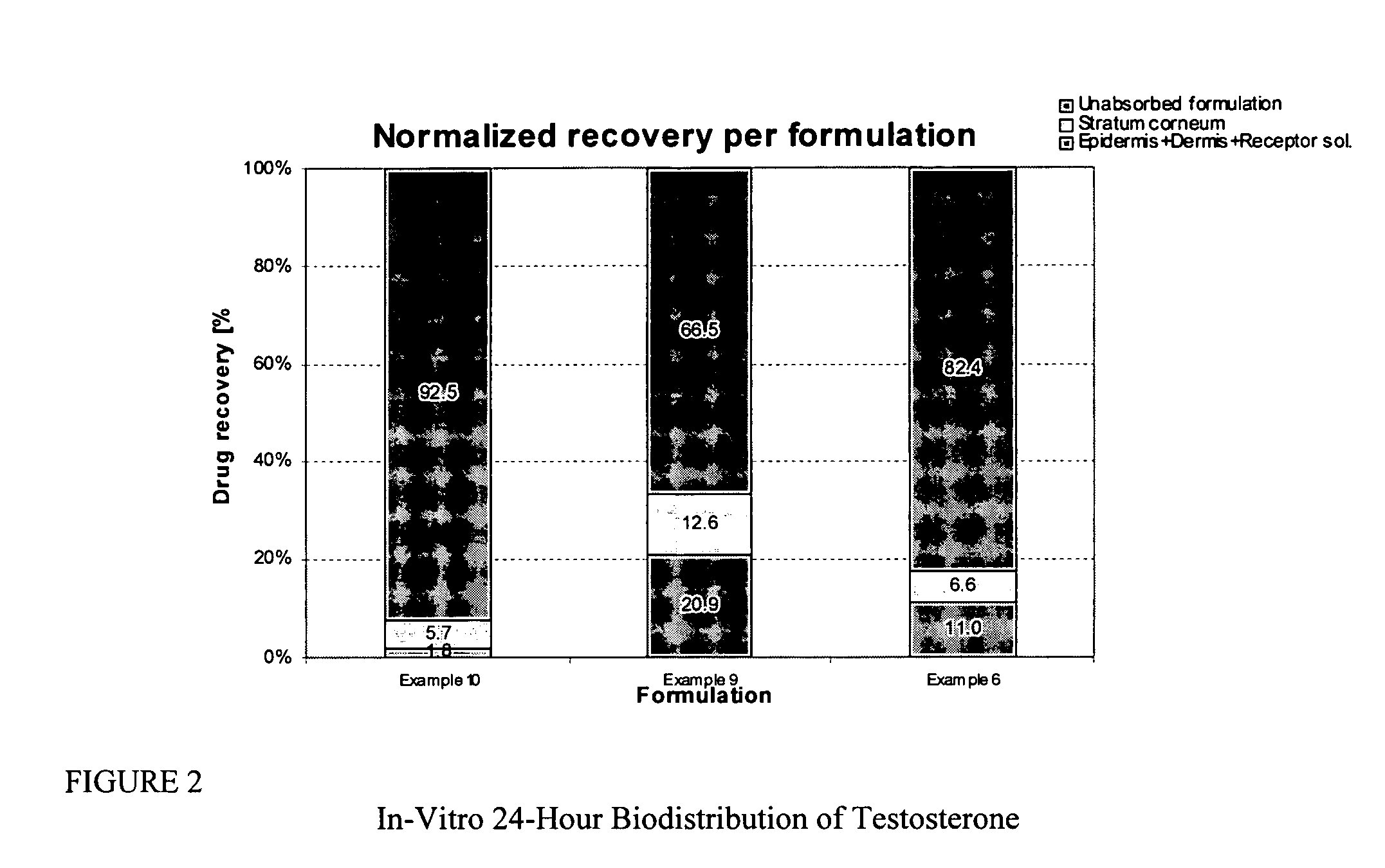Transdermal pharmaceutical formulation for minimizing skin residues
a technology of transdermal or transmucosal formulation and pharmaceutical formulation, which is applied in the direction of drug composition, aerosol delivery, bandages, etc., can solve the problems of unavoidable transfer of pharmaceutical formulation to clothing of users or even to other individuals in close proximity to users, inabsorption of pharmaceutical formulation through skin, and the vast majority of active drug remains unabsorbed on skin or mucosa surface, so as to prevent or reduce the transfer of active drug and reduce the transfer to individuals
- Summary
- Abstract
- Description
- Claims
- Application Information
AI Technical Summary
Benefits of technology
Problems solved by technology
Method used
Image
Examples
example 1
[0093]A gel containing testosterone 1.00% weight by weight (w / w), diethylene glycol monoethyl ether 5.00% w / w, propylene glycol 6.00% w / w, ethanol 46.28% w / w, purified water 38.11% w / w, carbomer (CARBOPOL™ 980 NF) 1.20% w / w, triethanolamine 0.35% w / w, disodium edetic acid (EDTA) 0.06% w / w, lauryl alcohol 2.00% w / w was prepared by dissolving the active ingredient (if not hydrosoluble) in the ethanol / propylene glycol / diethylene glycol monoethyl ether / lauryl alcohol mixture. The disodium EDTA solution was then added and carbomer thoroughly dispersed in the hydro-alcoholic solution under mechanical stirring at room temperature at a suitable speed ensuring good homogenization of the formulation while avoiding lumps formation and air entrapment. Triethanolamine was finally added under stirring to form the gel.
example 2
[0094]A gel composed by testosterone 1.00% w / w, diethylene glycol monoethyl ether 5.00% w / w, propylene glycol 6.00% w / w, ethanol 46.96% w / w, purified water 38.43% w / w, carbomer (CARBOPOL™ 980 NF) 1.20% w / w, triethanolamine 0.35% w / w, disodium EDTA, 0.06% w / w lauryl alcohol 1.00% w / w was prepared according to the manufacturing technique described in Example 1.
example 3
[0095]A gel composed by testosterone 1.00% w / w, diethylene glycol monoethyl ether 5.00%>w / w, propylene glycol 6.00% w / w, ethanol 47.52% w / w, purified water 38.87% w / w, carbomer (CARBOPOL™ 980 NF) 1.20% w / w, triethanolamine 0.35% w / w, disodium EDTA 0.06% w / w, was prepared according to the manufacturing technique described in Example 1.
PUM
| Property | Measurement | Unit |
|---|---|---|
| boiling point | aaaaa | aaaaa |
| pressure | aaaaa | aaaaa |
| skin temperature | aaaaa | aaaaa |
Abstract
Description
Claims
Application Information
 Login to View More
Login to View More - R&D
- Intellectual Property
- Life Sciences
- Materials
- Tech Scout
- Unparalleled Data Quality
- Higher Quality Content
- 60% Fewer Hallucinations
Browse by: Latest US Patents, China's latest patents, Technical Efficacy Thesaurus, Application Domain, Technology Topic, Popular Technical Reports.
© 2025 PatSnap. All rights reserved.Legal|Privacy policy|Modern Slavery Act Transparency Statement|Sitemap|About US| Contact US: help@patsnap.com



